We’re right in the middle of wine harvest season for the northern hemisphere – which tends to run from early September through to late October for most producers.
The early indications are not good.
France, for example, which is the second biggest producer of wine in the world, is forecasting an 18% fall in wine production this year – a huge drop, and bigger than had been expected.
And it’s much more severe in certain parts of the country.
In the Jura region, production volumes are on track to be 71% lower compared to 2023.
In Spain, which is just behind France in terms of the volume of wine it produces, there is an expectation of falling volumes this year too, though probably not as severe as the one being seen in France.
Meanwhile Italy, which is the world’s biggest producer, is forecasting an 8% increase in its harvest compared to last year – which seems positive on the surface.
But last year was described as "disastrous" by Italian producers – so a slight improvement on that is still a bad return.
Across the European Union as a whole, there’s a projection of a 1% fall in wine production this year – which doesn’t sound too bad, but it is on the back of a run of bad years for the sector.
What happened last year?

According to the International Organisation of Vine and Wine, which covers nearly 50 wine producing countries around the world, global production dropped by 10% last year.
That was the biggest drop in more than 60 years.
Australia was the worst hit with a 26% fall in production last year. Italy wasn’t far behind with a 23% fall.
Chile and South Africa were down by more than 10%.
And all of that that was on the back of a small fall in production in 2022.
So, based on the early projections for this harvest, we’re potentially on track for a third straight year of declines in global wine production.
So what’s causing this?
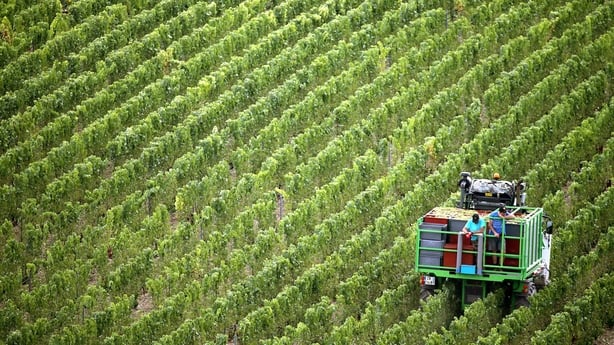
Well as always there are multiple factors at play.
In France, for example, there has actually been an active campaign to reduce the size of the country’s vineyards.
That’s because there’s been a fall in global demand for wine – and in particular some of the varieties France is best known for.
The economic uncertainty in China is leading to a sharp fall in demand there, as consumers reign in their spending on luxuries. But even in the wine heartland of France, consumers are drinking less of the stuff.
According to the International Organisation of Vine and Wine, consumption last year was at its lowest level since 1996.
Falling demand actually saw the French government spend €200m to buy up millions of gallons surplus wine – apparently enough to fill 100 Olympic sized swimming pools.
Technically that get destroyed – but in reality that means it is distilled into other products like ethanol.
There are also French government grants for vineyards that pull up some of their crops – with a 30,000 hectares reduction in vineyards being targeted.
The aim being to stop the price of French wine from falling, and putting producers out of business.
Despite that, the 18% fall in production this year is beyond what France expected.
And the main culprit for that is the weather.
What’s happened there?
France saw an unseasonable frost in April – and as the vines would have already had green shoots at that stage, it did a lot of damage.
In Jura, producers say that alone cost them 60% of their harvest.
But in the months that followed, there’s also been an unusual amount of rain across the country – and that’s a problem for wine-makers.
Damp conditions make it easier for mildew to grow on the plants – and that can devastate a crop.
Mildew was the reason for that disastrous year for Italian producers last year.
This year growers were better prepared, so even though vineyards in the north of the country saw a lot of rain again, it was less of a problem.
But what they also experienced – particularly those in the south – were extremely hot conditions.
That creates a different set of problems, including wildfires.
A number of French producers were wiped out by wildfires in 2022, while they were also a problem for Californian growers this year.
Most vineyards in California managed to avoid any direct impact from the fires, though there has been concern that crops might be tainted by smoke damage all the same.
But the challenges created by high heat goes beyond fire.
It also speeds up the ripening process. That it meant that in some places, like Sicily, the harvest actually started in July – rather than the normal September or October period.
And given the steps involved in the harvest – from picking grapes to fermentation to bottling and distribution – a producer having to adjust its schedule by weeks or months like that can be difficult and, potentially, very expensive too.
And having grapes ripen earlier also affects the taste, and it can affect the alcohol content too – because they usually have more sugar in them, which turns into more alcohol.
So all of this is to say that we’re seeing more extreme changes in weather around the world – including the major wine-growing regions of Europe, North America, South America.
At best it’s messing with the industry’s schedules, but at worst it’s destroying crops and making production far harder to manage and predict.
Does that mean prices are going to rise?
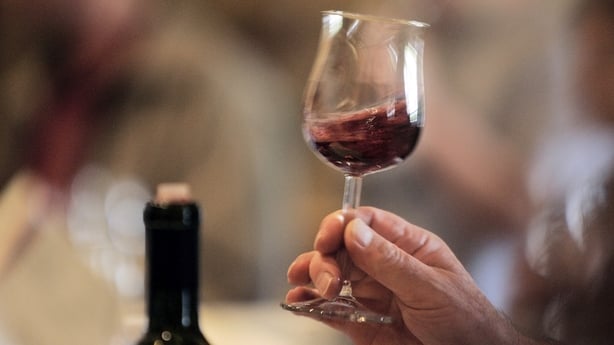
Potentially yes – and we have already seen wine prices going up in recent years because of production issues, as well as the generally higher cost of things like energy and shipping.
But we are seeing global demand for wine falling, so that may help to soften the blow somewhat.
The thing is, though, it’s nearly impossible to give a broad prediction on what this means for the wine industry.
That’s because, in reality, the wine industry is actually made up of lots of little industries around the world.
And it’s not just on a country-by-country basis.
Within countries you have different vineyards in different regions, growing different grape varieties, and producing different types of wine – and they’re all being impacted by the changing weather in different ways.
So when you read some of the reports for this year – places like Spain, for example, are saying volumes will probably be down, but what is coming through may actually be of quite a good quality.
So what happens to the price now really it depends on the wine you go for – and where it’s from.
You would presume, though, that falling production does mean there will be less choice on the supermarket shelves – and potentially the cheaper varieties will start to disappear as producers seek to focus on the wines that have a higher margin.
It’s not just wine that climate change is impact though, is it?
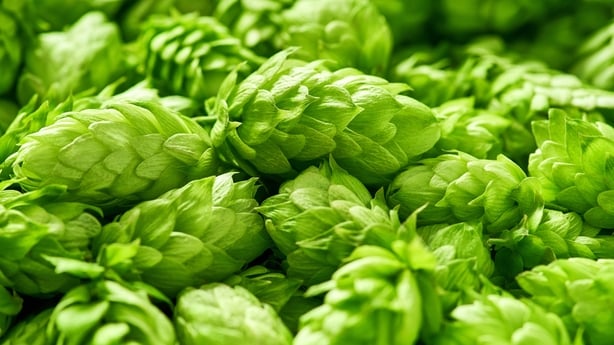
No – ultimately all of alcohol has some kind of agricultural source – and changing weather and climate is going to impact growth and flowering seasons and so on.
For example, a lot of beer production is reliant on malting barley – but that can struggle if the weather isn’t right.
Last year for example there were major issues with the spring barley planted by Irish farmers – with heavy rains in July damaging the quality of the crop and leaving a lot of it below the standard required for sale.
Hops are also an important part of the brewing process – particularly in helping to add flavour to beers – but changing weather is affecting production there too.
A study by the Czech Academy of Sciences and Cambridge University last year found that some hop-growing areas had seen a 20% drop in crop levels since the 1970s, and it predicted as much as 31% fall by 2050.
And what that effectively means is the remaining supply becomes more expensive – so the cost of beer goes up too – but if there are fewer hops available to go into beer, it could also mean drinks end up tasting worse too.
That’s all looking specifically at what climate change is doing to the plants themselves – but the impact it’s having on animals and insects is important here too.
Why is that?
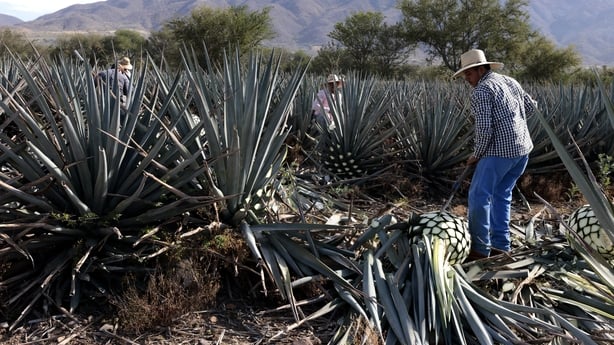
Well we know climate change is impacting animals and insect populations too – and many of those would be what helps plants to pollinate, grow and spread.
If you have fewer pollinators, you have fewer plants.
A good example of that is tequila and mezcal – the Mexican spirits that have been enjoying a remarkable boom in demand in the past decade.
They’re made from different variants of the agave plant – those cactus-like plants with long, thick, spiky leaves.
And you’d probably think they’re hardy enough plants to deal with extreme weather – which may well be true.
But their weak spot is that they’re pollinated by the likes of the Mexican long nosed bat – which is now an endangered species, with climate change reducing the number of suitable environments for their survival.
It’s thought that there are only around 5,000 of them left – and there are efforts underway to try and reverse the decline of the population.
Does this impact other types of drinks?
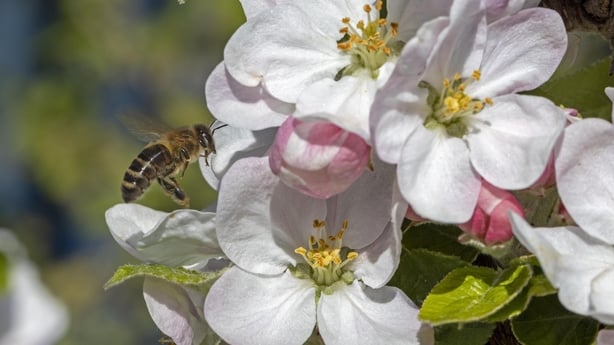
Yes - bees are of course an important pollinator of all kinds of plants – including the apple tree.
And there are fears that a falling bee population could impact orchards, which in turn would hinder cider production in places like Ireland and Britain.
But this is a problem that’s been seen around the world – and some have taken extreme steps to try and deal with the problem.
For example in the US, it’s not unusual for huge numbers of bees to be trucked across country in order to be released near an orchard – including almond or avocado orchards.
Meanwhile in China, some apple growers have even resorted to doing the job of the bees manually – by getting workers to apply pollen by hand.








